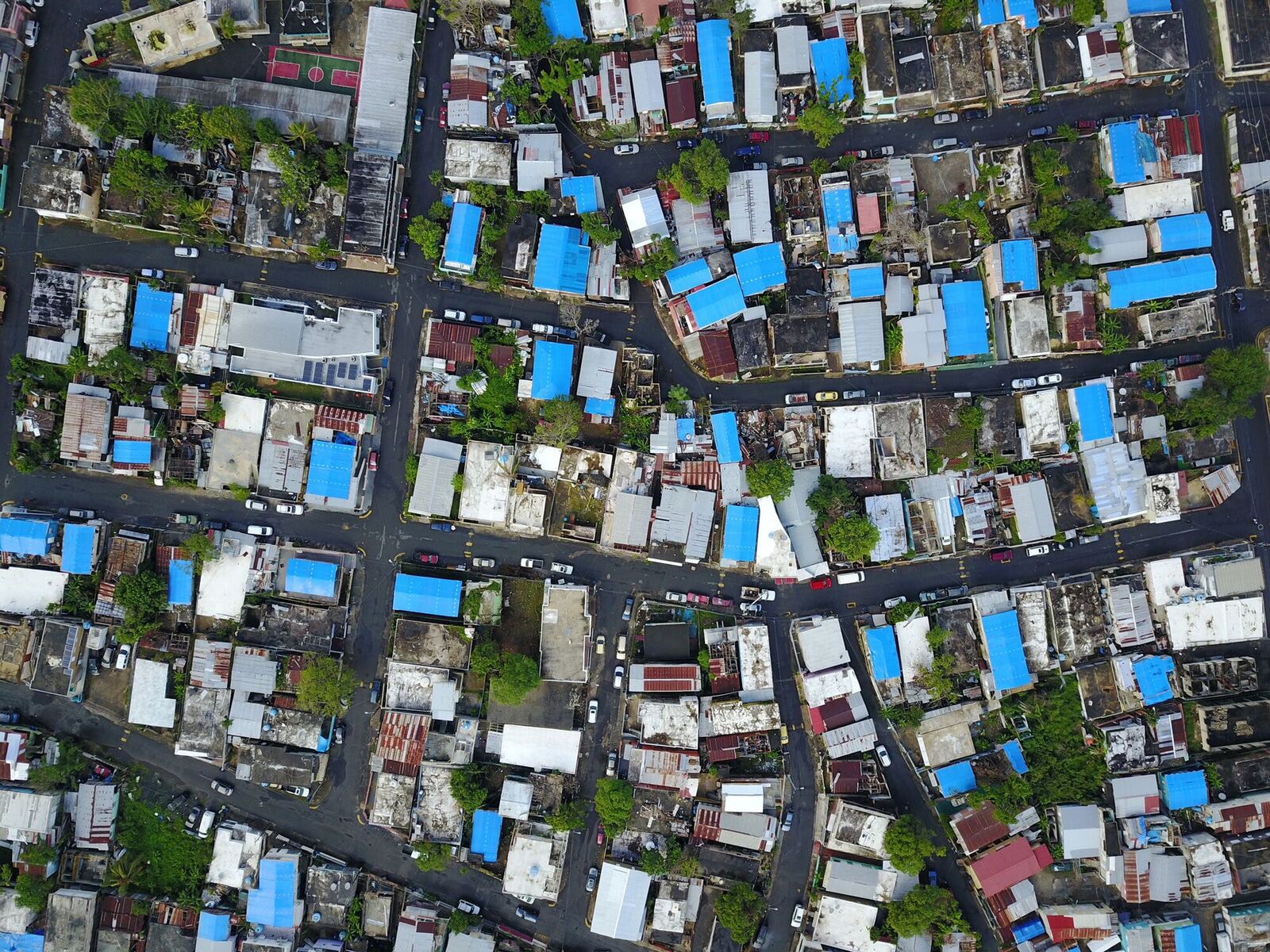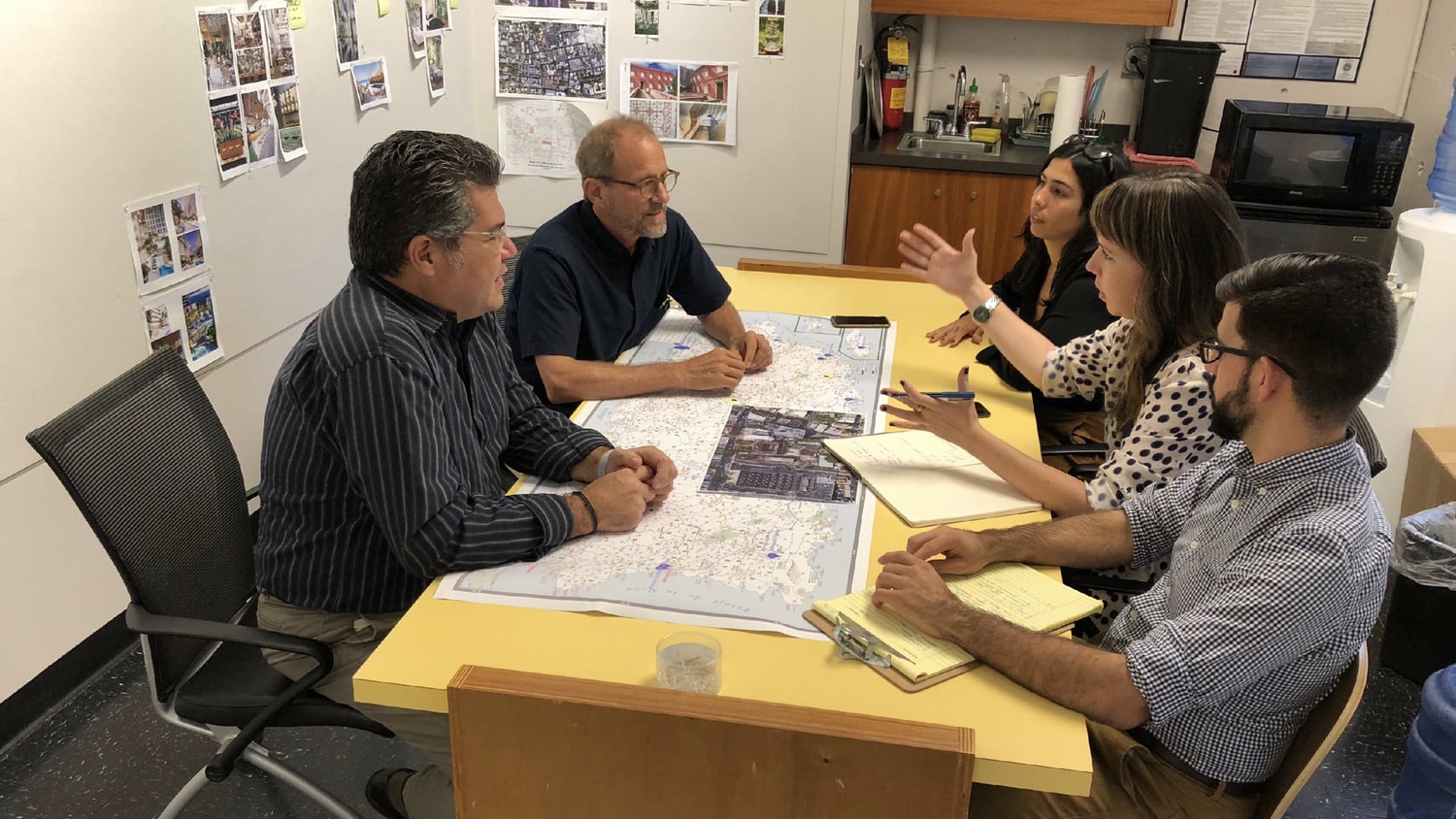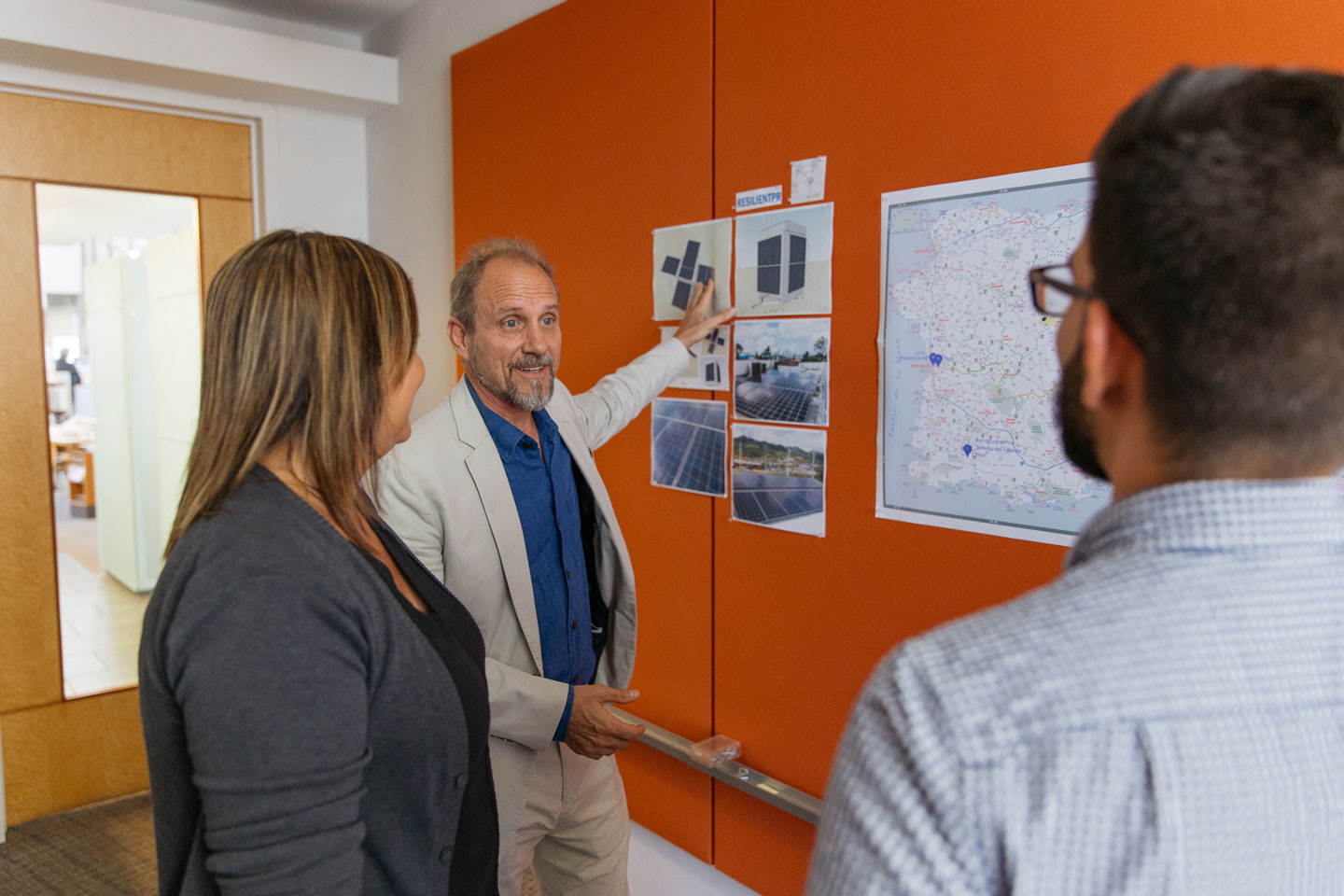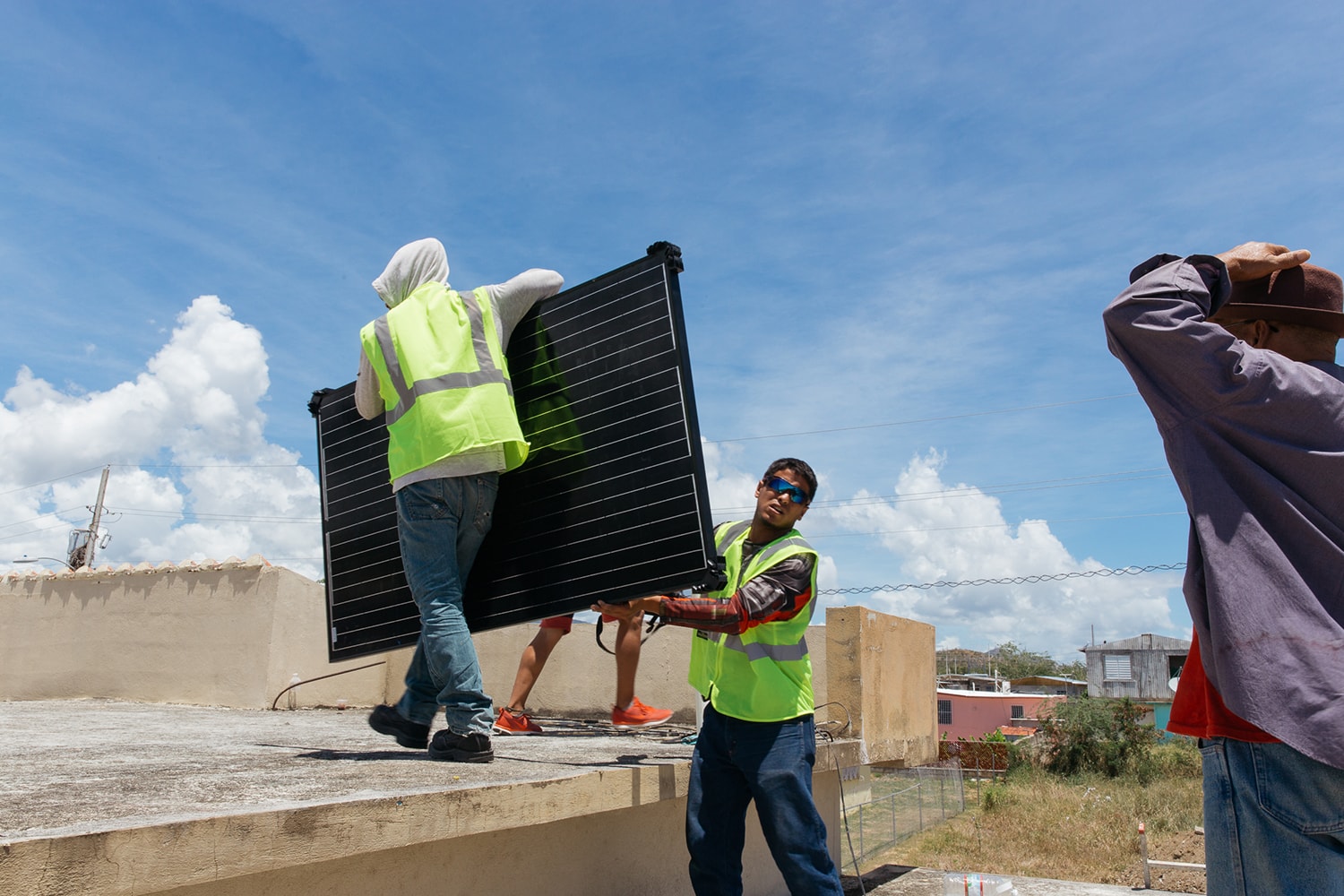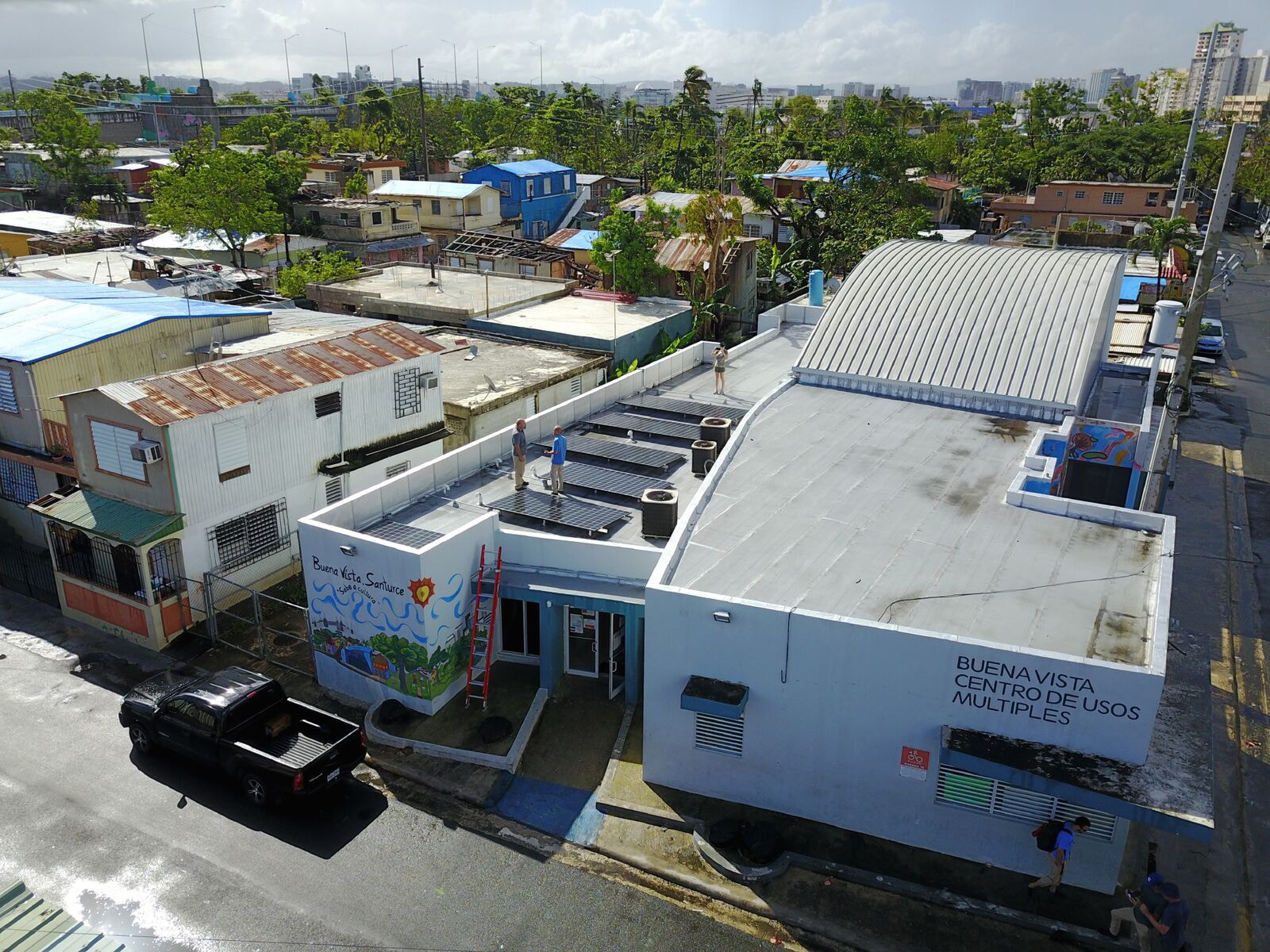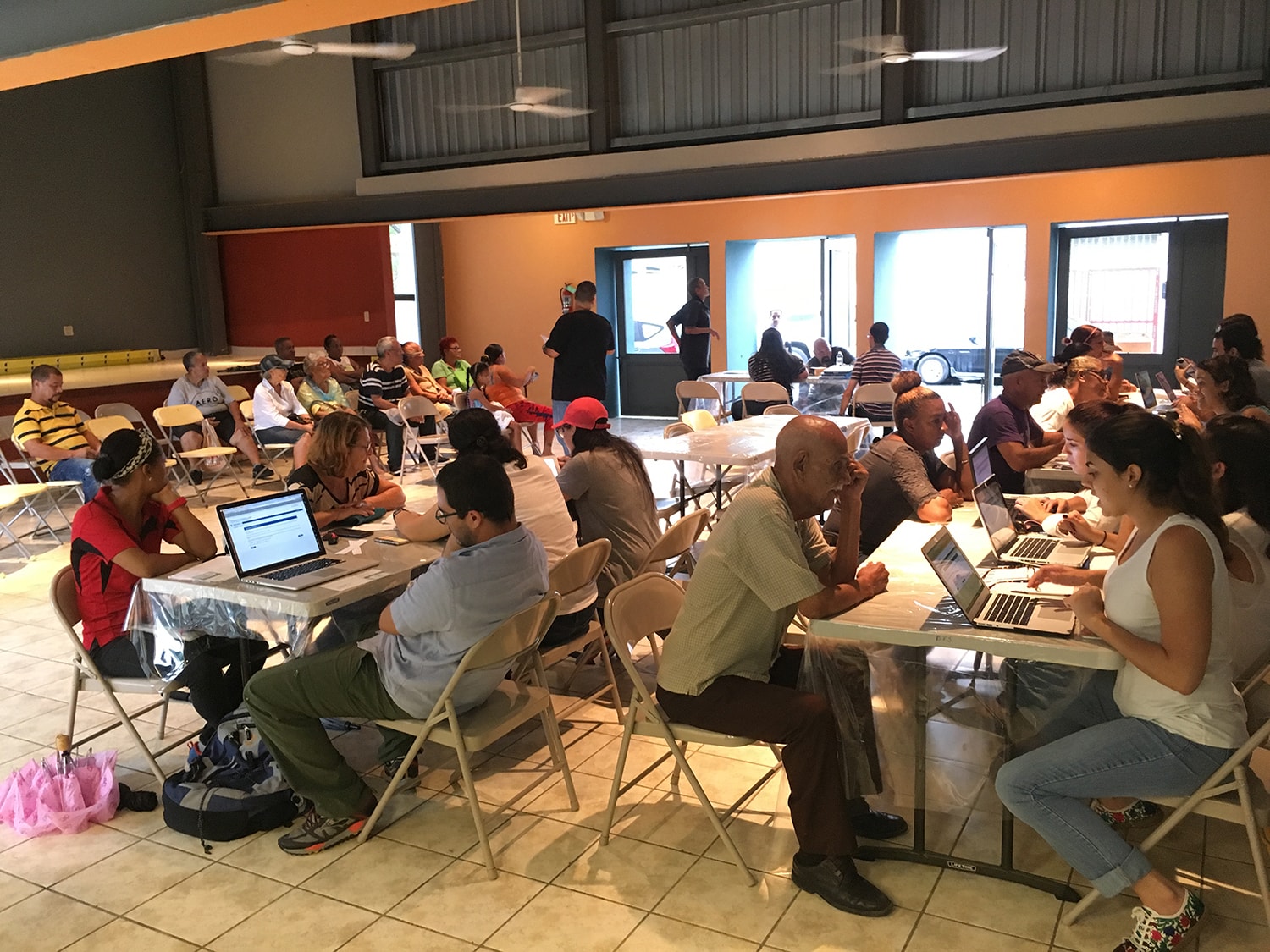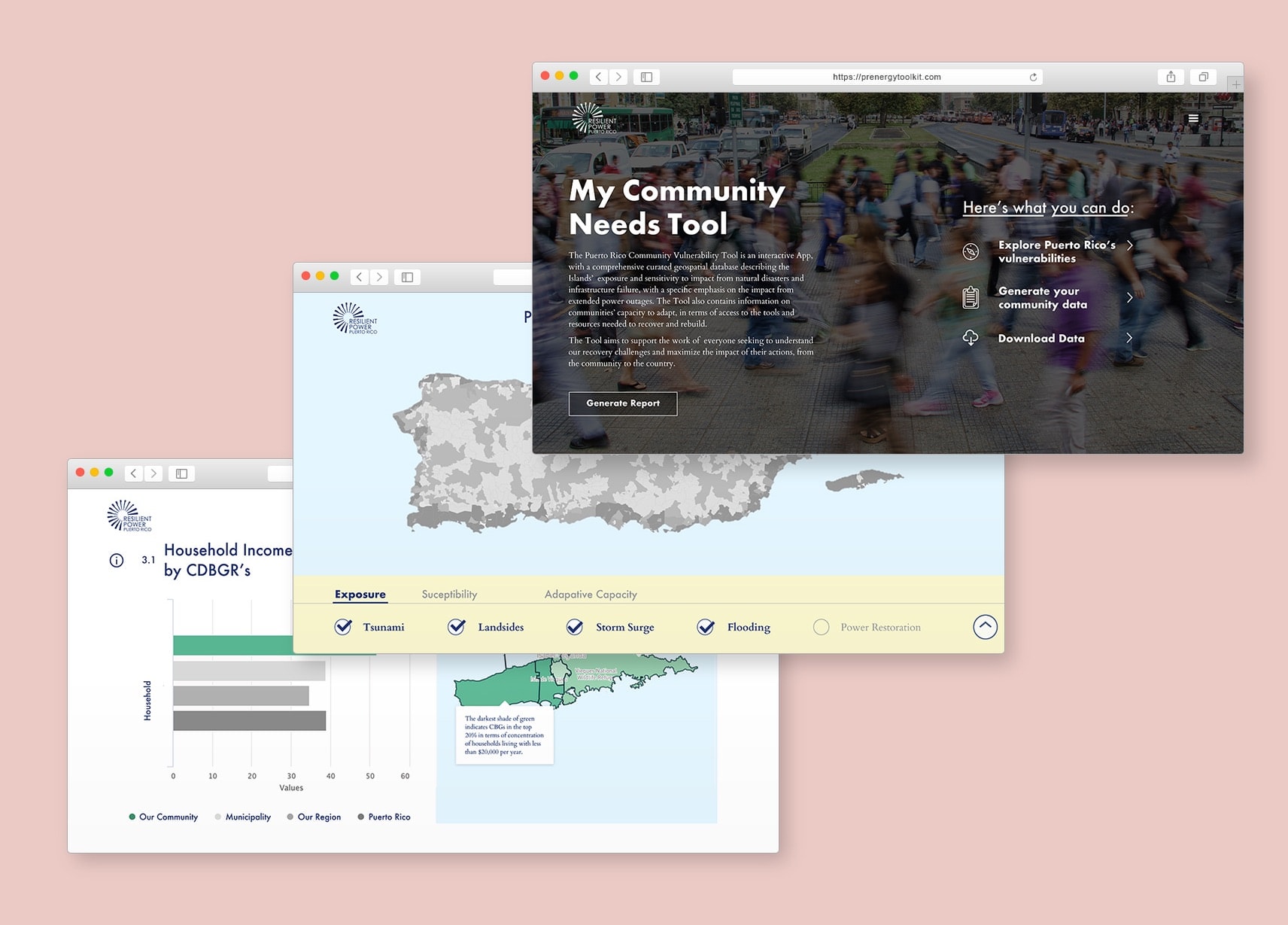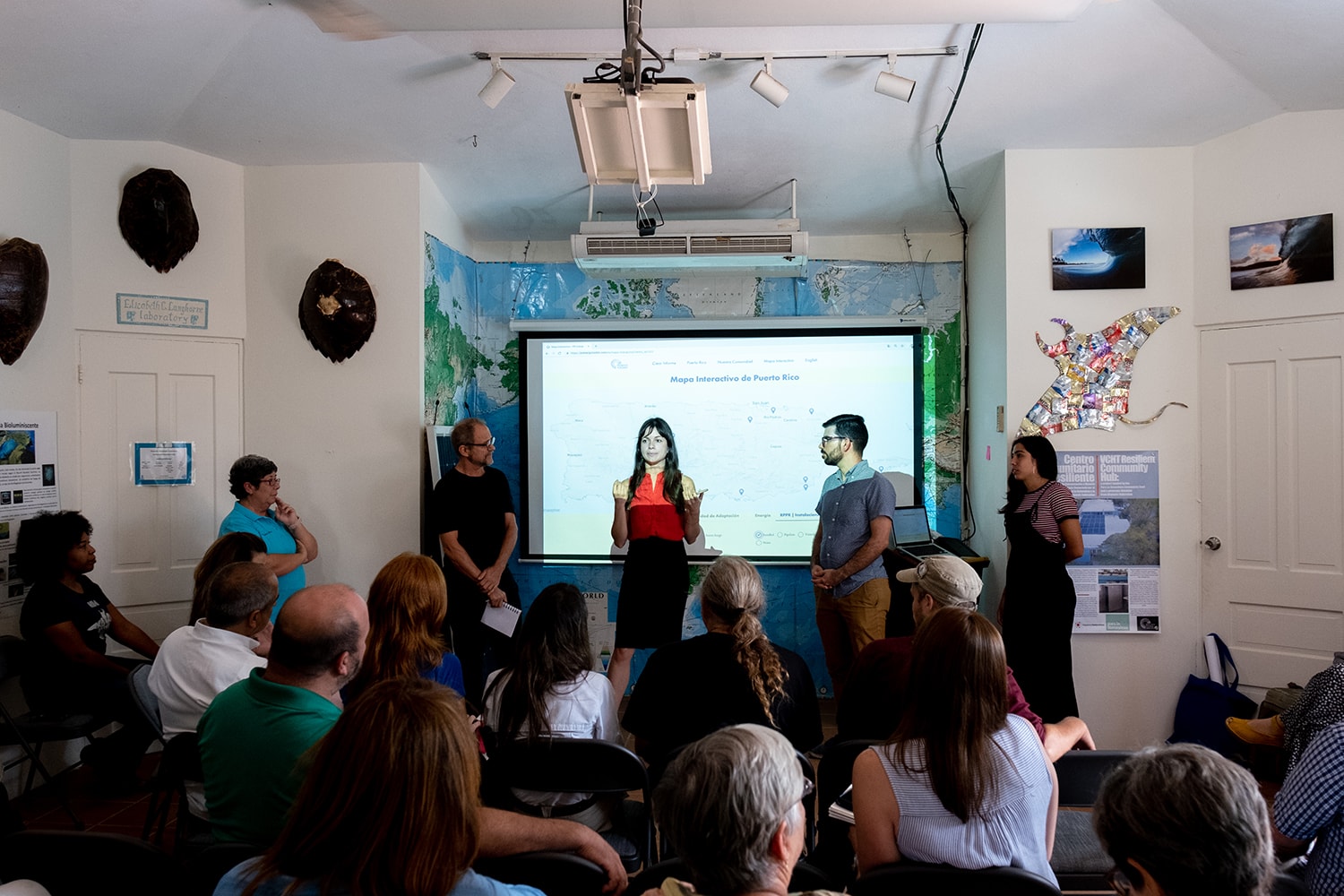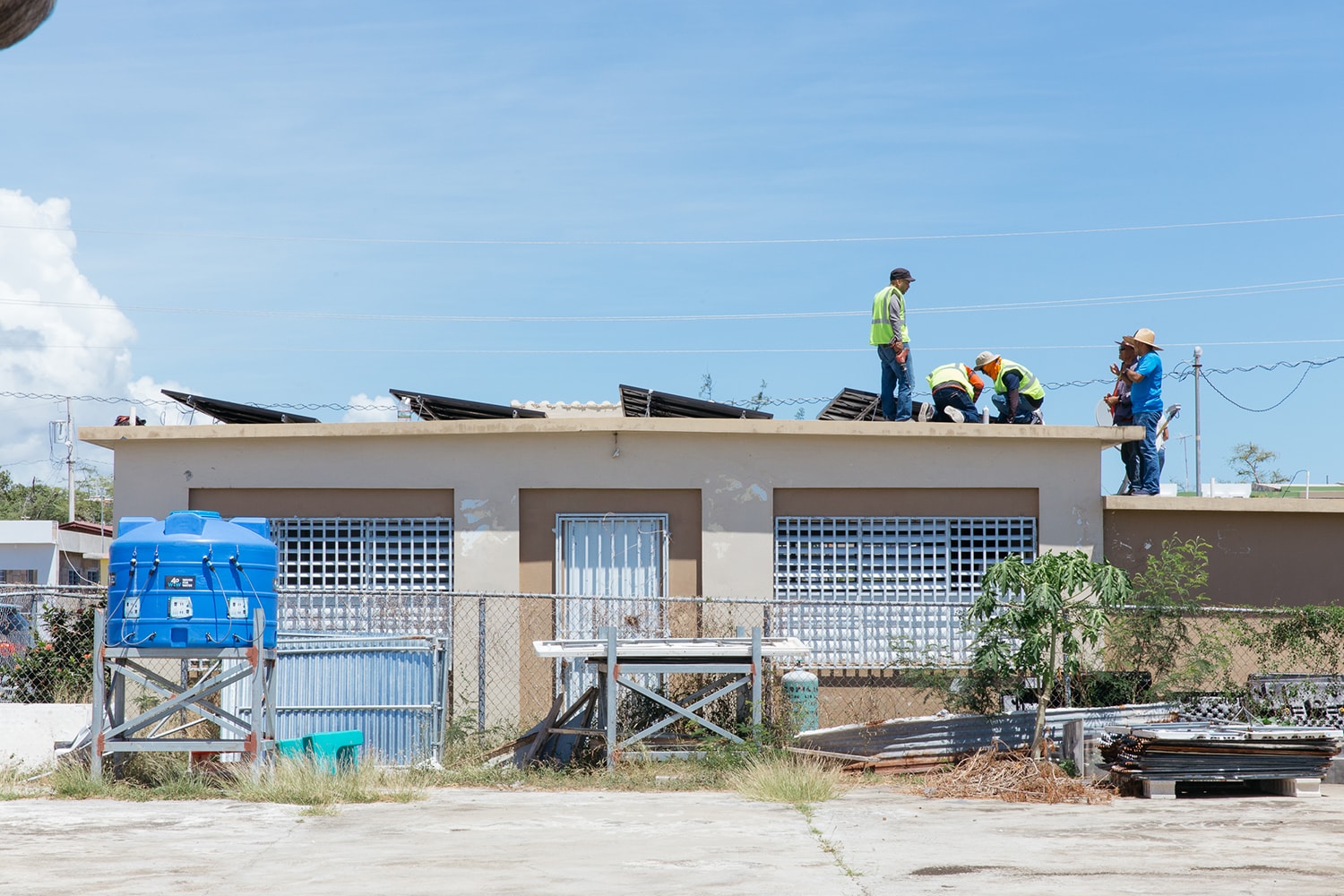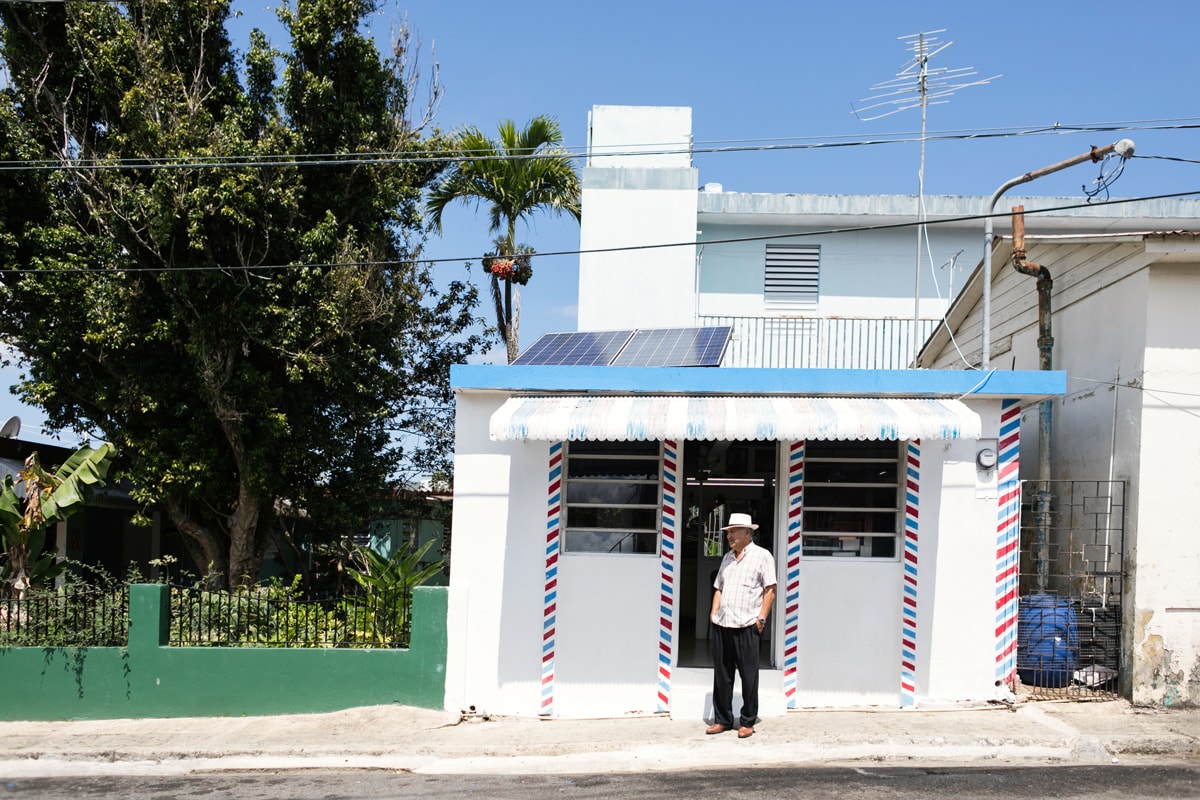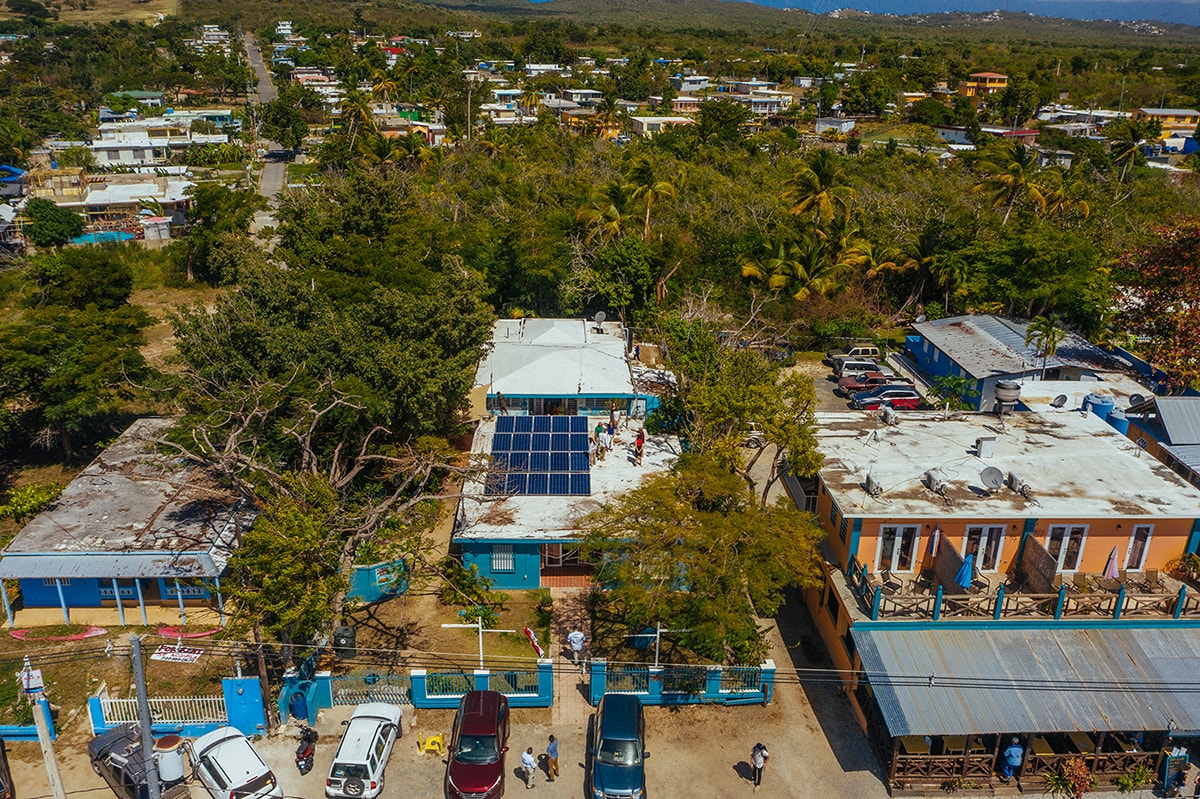Along with the incredible suffering brought by Hurricane María to Puerto Rico in September 2017, the catastrophe revealed a quiet reality as brutal as the disaster itself. Hurricane María precipitated a total collapse of the islands’ energy grid, leaving Puerto Rico without power and an estimated eighty percent of the transmission and distribution lines damaged. Communications systems went silent, gas and water became scarce, agriculture was wiped out, and urban life was made very difficult. As emergency generators roared in well-to-do neighborhoods, the poor mountainous communities suffered innumerable losses due to the lack of access to refrigerated medicines or dialysis treatments. Most of the more than 3,000 deaths during the disaster were attributable to the lack of access to energy.
Blue tarps as temporary roofs in the Caño Martin Peña neighborhood 3 weeks after hurricane Maria. Photo by Pablo Marvel
As energy began to be restored, the realities of the power dynamic behind the existing system became exposed. It took more than four months to restore power to seventy percent of consumers, leaving the last thirty percent — most of whom belong to underserved communities — facing the longest restoration times. Access to energy became the most significant impediment towards a healthy recovery and a sustainable future, and we were inevitably confronted with a very complex question: How can we design a radically new energy landscape that adapts to the existing and future socio-cultural and climatic conditions of our islands? Addressing this challenge requires designing for a transition.
The unequal and undemocratic access to energy in Puerto Rico has been a long-standing obstacle in the road towards equity and sustainability. Before María, ninety-eight percent of the energy consumed came from oil, the most expensive fossil fuel. The generation of this energy was concentrated in the south of the island, while most of the consumption came from the metropolitan north. Housing infrastructure is sprawled across the island´s landscape, making the traditional distribution of energy unfit for its context. With an abundance of solar and wind energy, how did Puerto Rico end up in this situation? From the very beginning, the Puerto Rico Electric Power Authority (PREPA) was established with one mission: to provide electricity at the least cost possible, implemented through a hierarchical, centralized planning process. While PREPA might have addressed the situation when it was established, the institution has not been able to adapt to changing conditions and demands. The centralized way of running the electrical system was no longer in tune with what local Puerto Rican communities needed and the way the housing infrastructure had developed. Emphasis was never placed on conservation and efficiency, nor did we embrace our most abundant local energy resource, the sun.
Resilient Power Puerto Rico team discussing the energy toolkit. Photo by RPPR
Resilient Power Puerto Rico team discussing various solar prototypes. Photo by Scott Lahan
In response to the collapse of the existing system, Resilient Power Puerto Rico (RPPR) was launched with the immediate goal of bringing power to the most impacted communities. Our goal was to create a de-centralized and participatory energy landscape where underserved communities were placed at the forefront of the recovery effort and where our local resources were the primary asset of our infrastructure investment.
Sunlight is extensively abundant and consistent in Puerto Rico, more than any other renewable source of energy and our mostly flat concrete roofs are underutilized, with an estimate that fifty percent of the roof area is capable of holding one hundred percent of the total island solar energy generation needs. Using these local resources, we began providing technical and financial resources in the form of design services and direct donations, for the installation of photovoltaic systems to community centers across the islands. We targeted common spaces, to create distributed energy generation and storage systems that serve a wide population and can act as recovery hubs in the face of climate disasters. But, bringing new technology to communities is not enough to transform the energy landscape. RPPR also aims to increase the capacity of communities to assess and address their critical needs; increase their access to knowledge, tools, and resources for sustainable and equitable community development; and foster the continuity of critical built and social infrastructure systems.
Solar Installation at El Coqui Solar Community, Salinas. Photo by Scott Lahan
Our first attempt at tackling these challenges was a set of installations in El Caño Martín Peña, an important but historically marginalized conglomeration of eight communities in San Juan. El Caño is one of the densest sectors in the metropolitan area. With a population of over 26,000 people, it is located on historically filled-in wetlands. This area has been informally developed over generations and has been severely underserved by governments. El Caño is affected by recurrent floods and poor infrastructure, among many other urban design and social problems.
RPPR helped install four solar hubs within this urban neighborhood at existing active community centers. Each of the systems installed generates approximately 5 kW of energy, provides around 20 kWhr of energy storage, and costs $25,000. The solar hubs are all within a 10-minute walk of each other, forming a continuous, resilient energy corridor within the community. The energized community centers provide a long list of services to more people in an efficient manner, including illuminated and ventilated spaces where community organizing and recovery took place after the hurricanes. Although electricity is now restored, the solar hubs continue to support resilience and lower the operational costs of these community centers, while giving a sense of local control over energy resources.
Our First Solar Hub in El Caño Martin Peña: Buena Vista Community Center. Photo by Pablo Marvel
Community Members filling out FEMA forms at the Buena Vista Community Center. Photo by RPPR
Afterschool program in the Caño Martin Peña Buena Vista Community Center. Photo by Scott Lahan
Since our first installations in El Caño, we have helped develop over thrity-fivesolar hubs across Puerto Rico. By providing a consistent and reliable source of electricity under all conditions, photovoltaic systems help community centers, service providers in towns, and urban dwellers to have energy even after a climate disaster. A sustainable energy landscape should stem from a shared vision of the future where all institutions and communities alike are not just passive consumers but are actively engaged in a participatory system.
Solar Installation at ATMAR (Centero Educativo Amigos de las Tortugas Marinas, Maunabo). Photo by Scott Lahan
Along with our solar installations, we provided communities and individuals access to information through an open-source toolkit that assesses community vulnerabilities from exposure to risks, sensitivity to natural hazards, and their level of adaptive capacity.
The Puerto Rico Energy Toolkit, an Open Source comprehensive geo-spatial database
Community Toolkit Workshops at the Fideicomiso de Conservación e Historia in Vieques. Photo by Anexis Morales
Profound changes in Puerto Rico’s energy landscape are happening right now, and local communities have never been so aware and active about their energy future. Giving people a role in the creation of new energy systems and sharing a sense of pride in the sustainability and independence of this energy landscape is paramount to a transition to resilience and equity. Leaving behind a centralized, hierarchical, fossil-fuel-dependent electrical system towards community control of their energy resources is a revolution. By fostering the development of renewable energy infrastructures capable of supporting a community´s energy needs, we increase the local control of energy resources while providing continued access to the energy needed to satisfy critical loads. By designing context-based, locally-controlled energy systems we are creating communities across the islands that can autonomously adapt and thrive despite climatic challenges, helping to build an equitable Puerto Rican society while joining the global movement towards a sustainable world.
Solar Hub at El Coqui Solar Community, Salinas. Photo by Scott Lahan
Solar Barbershop in the town of Adjuntas – Donation of Solar equipment to Casa Pueblo. Photo by Monica Felix
Solar Hub at the Fideicomiso de Conservación e Historia in Vieques. Photo by Anexis Morales
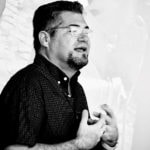 José Juan Terrasa-Soler, ASLA, is a registered landscape architect and environmental scientist, with over 20 years of experience in environment, development, planning, and design. He has held leadership positions in corporate, governmental, and nonprofit organizations, and is currently Director at Marvel Architects, San Juan. José Juan received advanced degrees in Ecology, Environmental Studies, and Landscape Architecture from Michigan, Yale, and Harvard, respectively. He is a founding faculty member of the MLA degree program at Polytechnic University of Puerto Rico, and Secretary of the Board of Directors of Resilient Power Puerto Rico, a nonprofit dedicated to resilience across Puerto Rico. His professional practice, research, writing, and teaching focus on the intersection of ecology and design, including green infrastructure, landscape resilience, and sustainable urban design.
José Juan Terrasa-Soler, ASLA, is a registered landscape architect and environmental scientist, with over 20 years of experience in environment, development, planning, and design. He has held leadership positions in corporate, governmental, and nonprofit organizations, and is currently Director at Marvel Architects, San Juan. José Juan received advanced degrees in Ecology, Environmental Studies, and Landscape Architecture from Michigan, Yale, and Harvard, respectively. He is a founding faculty member of the MLA degree program at Polytechnic University of Puerto Rico, and Secretary of the Board of Directors of Resilient Power Puerto Rico, a nonprofit dedicated to resilience across Puerto Rico. His professional practice, research, writing, and teaching focus on the intersection of ecology and design, including green infrastructure, landscape resilience, and sustainable urban design.
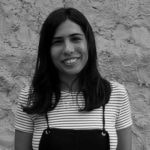 Daniela Lloveras-Marxuach holds a double bachelor’s in psychology and fine arts from The New School University in NYC and a Masters in Cognitive Science and Language from Universitat de Barcelona. She joined Resilient Power Puerto Rico in 2018 as a designer, managing all visual communication. Her major contribution to RPPR is the PR Energy Toolkit, a tool that helps individuals analyze their communities’ vulnerabilities, connect with other likeminded organizations interested in transitioning to renewable energy, and a directory that provides information of the renewable energy stakeholders across the Caribbean. Committed to sustainability and social causes Daniela has volunteered at various non-profits, such as Para La Naturaleza, a conservation trust, Espacio A, democratic school, Alliance for Agriculture, a farmer’s alliance and El Departamento de la Comida, an agroecological food hub.
Daniela Lloveras-Marxuach holds a double bachelor’s in psychology and fine arts from The New School University in NYC and a Masters in Cognitive Science and Language from Universitat de Barcelona. She joined Resilient Power Puerto Rico in 2018 as a designer, managing all visual communication. Her major contribution to RPPR is the PR Energy Toolkit, a tool that helps individuals analyze their communities’ vulnerabilities, connect with other likeminded organizations interested in transitioning to renewable energy, and a directory that provides information of the renewable energy stakeholders across the Caribbean. Committed to sustainability and social causes Daniela has volunteered at various non-profits, such as Para La Naturaleza, a conservation trust, Espacio A, democratic school, Alliance for Agriculture, a farmer’s alliance and El Departamento de la Comida, an agroecological food hub.
Cite
José Juan Terrasa-Soler and Daniela Lloveras-Marxuach, “Community Power as Provocation: Local Control for Resilience and Equity,” Scenario Journal 07: Power, December 2019, https://scenariojournal.com/article/community-power/.

